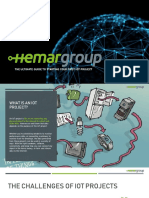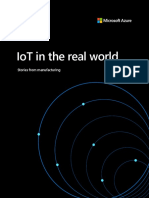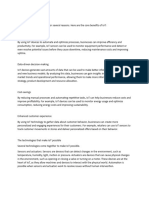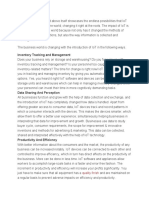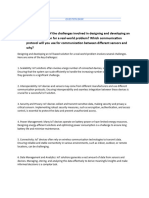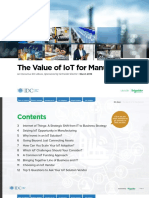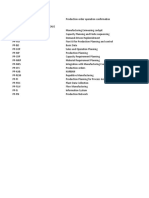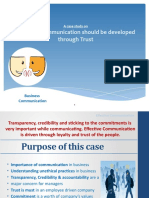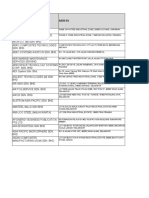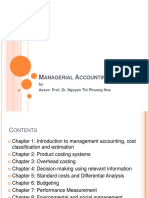Evaluate Cost of IoT
When planning an IoT project, it’s all too easy to focus on the devices. That can lead to a
very hardware-centric viewpoint when budgeting. As IoT experts and experienced
organizations will tell you, the true cost of an IoT project is a little more complicated—but it
can be optimized with the right tools and the right partners.
A good rule of thumb is that the total cost of an IoT project costs equals the cost of
implementation plus the cost of operation. In basic terms, you’re talking about setting it up
and then keeping it running.
If we take a closer look at the first part, the cost of implementation, we can break that down
further into the cost of hardware, software and communication. As we can see, too many
moving parts are involved here and without a proper plan, the cost of creating an IoT solution
can exceed the budget very soon. Let’s try to better understand the factors which contribute to
the final cost and how to optimize those.
IoT hardware costs
As I mentioned above, a common pitfall in IoT projects is to focus on the devices. But in IoT
project development, the device shouldn’t be the starting point. It will often take a few
iterations before the device design is finalized. To avoid expensive hardware iterations, you
should start with a digital device simulator like Bridgera Digital Twin. By using this IoT
software solution, you can mimic the data capture and connectivity of physical devices. Build
the entire solution using the simulator and once you are happy with the outcome, go for the
design and development of the physical hardware device. This approach will eliminate
multiple expensive and lengthy hardware iterations and will definitely save time and money.
Also, try to use pre-certified modules while designing the IoT device. This will reduce the
cost of certification and also will reduce the risk of failure with certification testing to a great
extent.
�IoT software costs
Reinventing the wheel is the surest way to increase costs unnecessarily. Instead of
subscribing to an IoT development platform like AWS or Azure and trying to build a full IoT
solution from the ground up, make use of an application enablement platform (AEP).
An AEP like Bridgera Monitoring provides a single end-to-end IoT integration platform that
minimizes points of contact and reduces the moving parts that can contribute to runaway
costs. Bridgera Monitoring offers everything that organizations ultimately hope to gain from
an IoT solution, including an IoT cloud platform, an intuitive dashboard, custom apps and
analytics. The approach of configuration & customization instead of building from
scratch will surely reduce the development cost of an IoT solution.
IoT communication costs
Keeping IoT costs down involves streamlining every part of an IoT project. And that includes
data communication. Lightweight messaging protocols like MQTT and CoAP in combination
with less expensive, low-bandwidth data plans such as NB-IoT and LTE Cat-M1 can reduce
communication overhead.
Of course, to keep data communication in check and determine the most efficient solution, it
helps to have guidance from an expert IoT implementation partner such as Bridgera. This
may involve optimizing the payloads or recommendation for the right RF strategy. We’ve
developed a variety of IoT business solutions and know how to maximize ROI(Return of
Investment) for IoT projects in multiple industries.
Cost of IoT operation
Once you’ve optimized the cost of implementation of your IoT project, you still have the
second half of the equation: cost of operation. This is where it pays to have an experienced
partner, because operation continues for the life of your IoT project. Constant optimizations
can lead to ongoing ROI.
�As a skilled IoT solutions provider, we at Bridgera have the cross-industry expertise needed
to reduce data usage, minimize IoT device power consumption, optimize your IoT cloud
infrastructure and help you leverage the insight of IoT analytics. Streamlining every aspect is
second nature to us, and that enables your organization to reap the benefits of IoT while
keeping costs down.
If you want an affordable IoT solution without having to sacrifice quality or flexibility,
simply sign up today for a free demo. We’ll be happy to walk you through cost-optimized
implementation and operation of your organization’s next IoT project.





